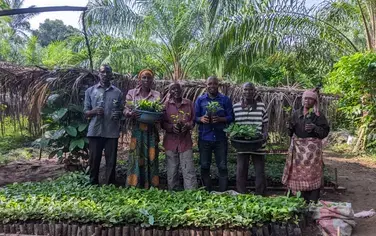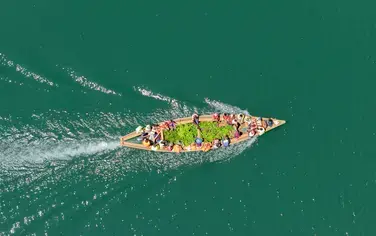AFR100 is a partnership of African countries committed to restoring 100 million hectares of degraded land by 2030. So far, 34 countries have joined AFR100 and pledged to put 129.5 million hectares under restoration. But how will those countries measure restoration? Is it possible to know what's working and how to develop best practices?
That's all possible. Thanks to advanced satellite technology, improved networks between local people and technical experts, and a growing sphere of science devoted to solving tough landscape problems, monitoring systems tailored to key restoration actors such as governments and local restoration implementers are increasingly accessible. Landscape monitoring, driven by monitoring principles, helps to ensure that:
- Restoration activities meet their objectives
- Identify any issues or challenges that may impede progress
- Detect early signs of success or failure
- Identify areas where adjustments or improvements may be necessary
- Provide valuable information on the ecological and socio-economic impacts of restoration efforts, which can be used to guide future management decisions
Through AUDA-NEPAD, the AFR100 has developed a monitoring framework with three main pillars: nature, governance, and economy, each with a set of aspirations, indicators, and sub-indicators. The Framework consists of restoration objectives and measurable metrics to assess the impact of restoration efforts, provide adaptative management guidance and, importantly, unlock carbon/climate finance and investments. The framework outlines the ambitions under each indicator: what they imply, why they are essential, how to measure them, how to gather data, and how frequently to quality assess, aggregate, manage, and verify as well as sharing through the AFR100 monitoring platform.
Restoration stakeholders have worked tirelessly to find suitable solutions to track restoration progress at all levels. They developed the restoration monitoring tools guide to assist individuals who want to monitor restoration but unsure where to begin or what tools to consider when setting up a monitoring system. This restoration tools guide is best suited for users in the planning stages of a restoration project or who have recently completed a restoration project and are thinking about how to start monitoring activities. In addition, programs such as the Landscape Monitoring Accelerator, designed for decision-makers and geospatial specialists working for regional, national, and municipal governments in AFR100 member countries, collaborate with a range of stakeholders to strengthen the technical and financial capacity for land restoration monitoring at varied levels. This combines the most important parts of tracking and evaluating restoration activities to ensure long-term success. Deep targeted learning with top restoration monitoring professionals, as well as exposure to the best restoration monitoring datasets and platforms available, are all part of this initiative.
Resources:
- Read: Could AI Unlock Finance for Nature Restoration?
- New method: Every tree counts: Large-scale mapping of canopy height at the resolution of individual trees | Meta Research (facebook.com) and DINOv2: State-of-the-art computer vision models with self-supervised learning (facebook.com)
- TerraFund for AFR100: How We Monitor, Report, and Verify and Blog here.
- The Road to Restoration | World Resources Institute (wri.org)
- Monitoring Restoration With Collect Earth | World Resources Institute (wri.org)
- Improving the Monitoring of Forest and Landscape Restoration in Africa | AFR100
- Framework for Ecosystem Restoration Monitoring | FAO




